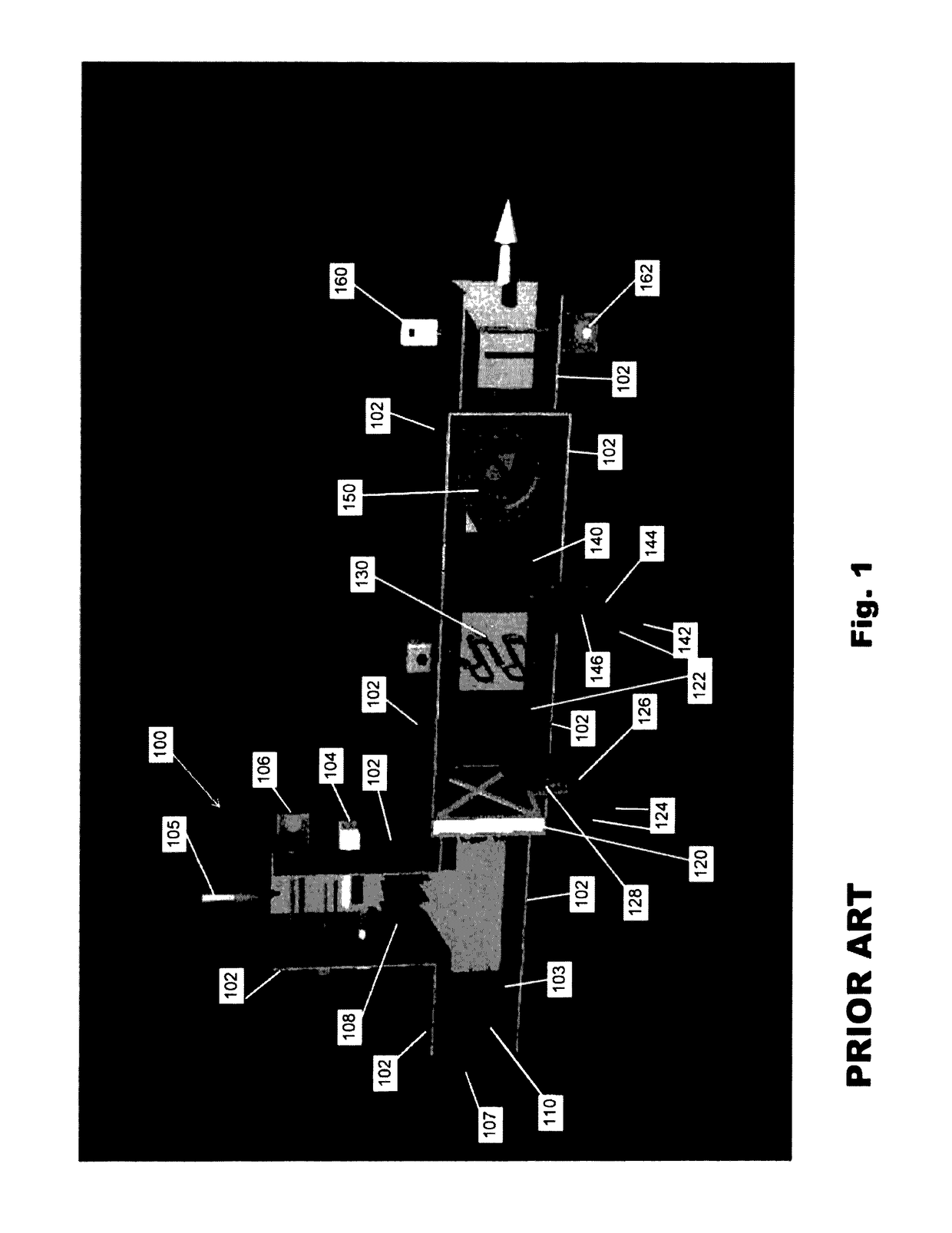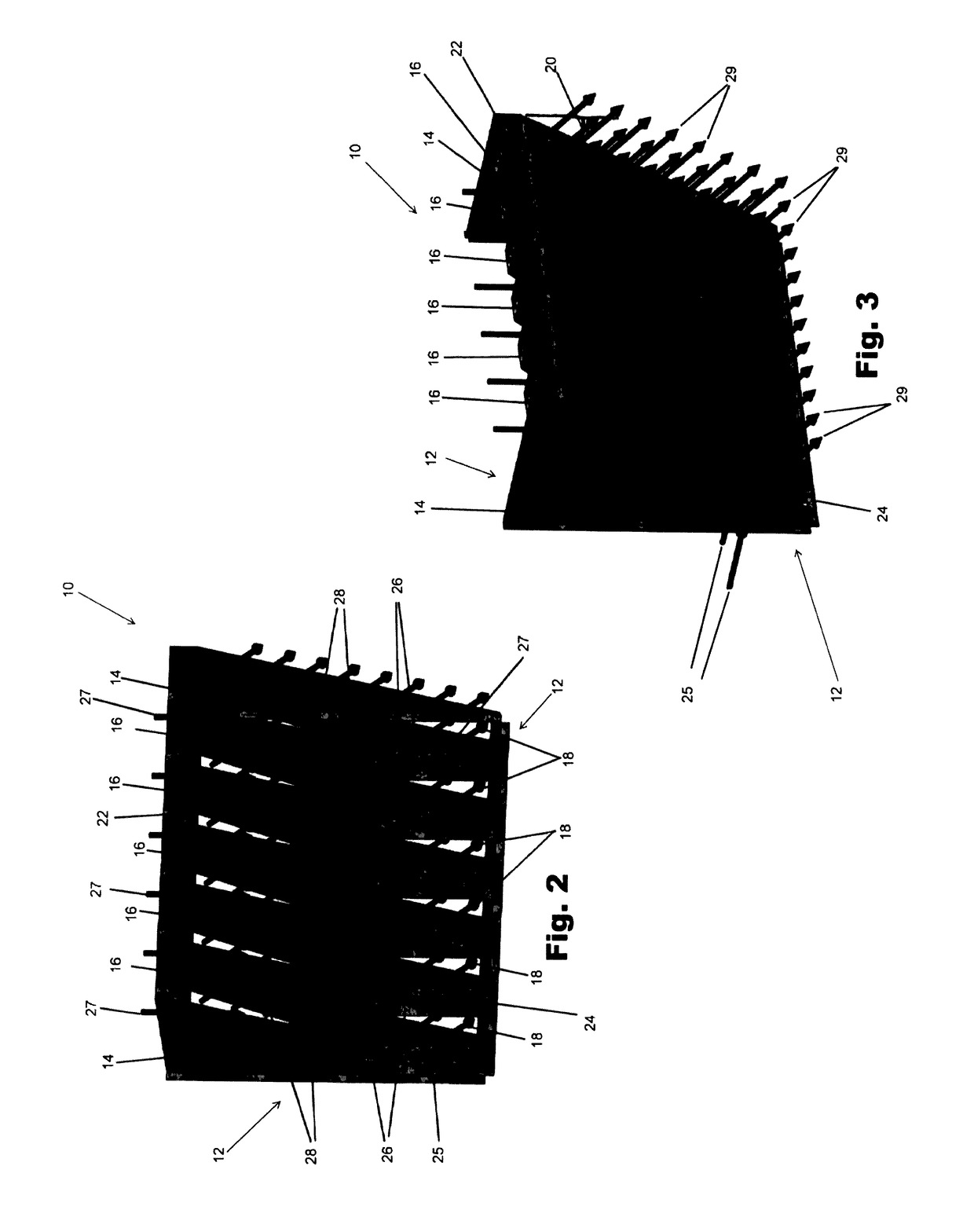Combined economizer and mixer for air handling unit
a technology of air handling unit and mixer, which is applied in the direction of ducting arrangement, lighting and heating apparatus, heating types, etc., can solve the problems of not being able to complete the mixing of the separate air streams within the mixing box, consuming a large amount of energy, and typically some amount of temperature stratification of the airstream, so as to reduce the risk of affecting the quality of the air. , the effect of reducing the risk of affecting the quality of the air
- Summary
- Abstract
- Description
- Claims
- Application Information
AI Technical Summary
Benefits of technology
Problems solved by technology
Method used
Image
Examples
Embodiment Construction
[0057]Referring to FIG. 1, a prior art and exemplary air handling unit 100 is illustrated. The purpose of this illustration is to provide background as to the particular application of the invention, and further to describe the invention in combination with an air handling unit. Components of the unit 100 are housed within a series of ducts 102. There are two inlets or entrances to the air handling unit, namely, a return air duct 105 and an outdoor air duct 107. The directional arrows are provided noting the general direction of airflow and also denoting the respective ducts. Airflow for these ducts intersects or coincides within a mixing box 103. Within the return air duct 105, one or more sensors can be provided, such as a temperature sensor 104, a humidity sensor 106, and others. Temperature and humidity are measured at this location, and may be input to an air handler controller (not shown) in order to determine the degree to which this airstream must be conditioned. A return ai...
PUM
 Login to View More
Login to View More Abstract
Description
Claims
Application Information
 Login to View More
Login to View More - R&D
- Intellectual Property
- Life Sciences
- Materials
- Tech Scout
- Unparalleled Data Quality
- Higher Quality Content
- 60% Fewer Hallucinations
Browse by: Latest US Patents, China's latest patents, Technical Efficacy Thesaurus, Application Domain, Technology Topic, Popular Technical Reports.
© 2025 PatSnap. All rights reserved.Legal|Privacy policy|Modern Slavery Act Transparency Statement|Sitemap|About US| Contact US: help@patsnap.com



